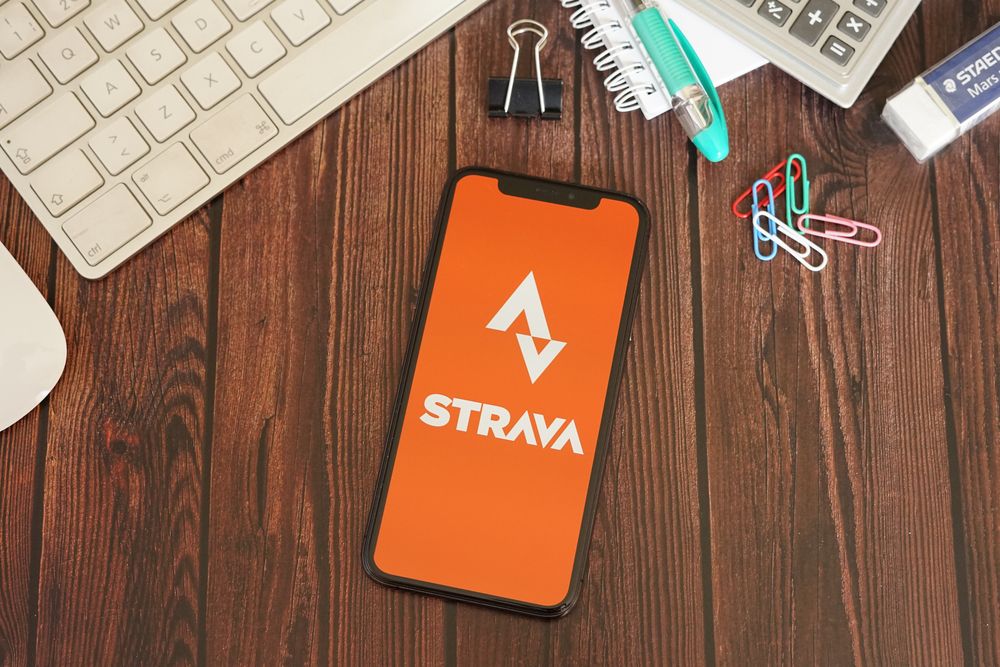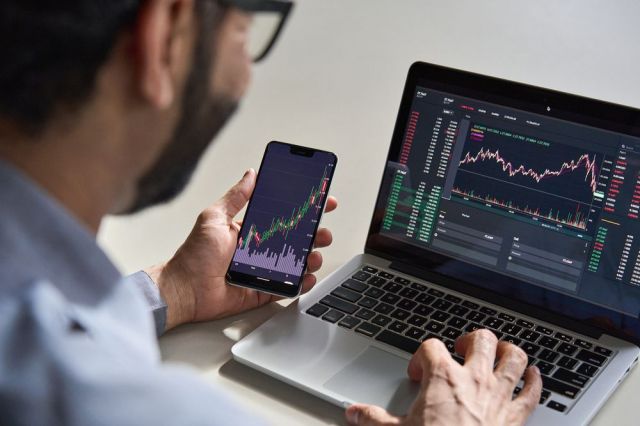Strava IPO: how to trade Strava shares

Learn about Strava and its potential IPO, what could impact its share price, and how to trade exposure to this stock via CFDs.
IPO stocks are often highly volatile, and early trading can involve rapid price swings and significant risk.
Create an account Open a demo account
When is the Strava IPO date?
The Strava IPO date has not yet been confirmed. However, the California-based fitness and social networking app has invited banks including Goldman Sachs, JPMorgan and Morgan Stanley to pitch for roles on the IPO (source: Reuters). Founded in 2009, Strava has grown from a niche platform for cyclists to one of the largest global sports communities, boasting more than 100m users across 185+ countries.
Strava’s name has been subject to initial public offering speculation since at least 2020, and analysts now see a realistic IPO window 2026, depending on equity market conditions and investor sentiment toward consumer-tech and fitness names (source: Reuters).
Current expectations
Strava has raised over $150m in venture capital, with investors including Sequoia Capital, Dragoneer, TCV, and Madrone Capital Partners. The company was valued at around $2.2bn in a May 2025 fundraising. Some market observers believe a public listing could target a valuation between $2 and $3bn, though this is currently speculative and will depend on user growth, conversion of free users into paying subscribers, and competitive dynamics in digital fitness.
Why list now?
- Capital for growth: IPO funds would allow Strava to expand product features, add AI-driven training tools, and grow internationally.
- Liquidity for investors: venture backers from the 2010s are seeking exits after more than a decade.
- Brand momentum: Strava has become synonymous with social fitness tracking, giving it strong consumer awareness.
- Employee equity: a listing provides liquidity for staff options and helps attract top tech talent.
Market backdrop
The IPO market for consumer apps has been mixed. Companies like Peloton went public with huge enthusiasm but later struggled with profitability. Others, such as fitness wearables providers, have seen steady demand. Investor appetite for Strava will depend on whether it is perceived primarily as a fitness app, a subscription business, or a social network.
What is Strava?
Strava is a fitness tracking and social networking platform that allows users to record workouts, track performance, and share activity with a global community. Its slogan – ‘the social network for athletes’ – reflects its dual role as a utility app and a community hub.
Origins
Strava was founded in 2009 in San Francisco by Mark Gainey and Michael Horvath, who had previously co-founded Kana Communications. They designed Strava initially for cyclists, offering GPS-based activity tracking and competitive leaderboards. Over time, Strava expanded to support running, swimming, hiking, rowing, and over 40 other sports. The company grew rapidly during the 2010s as smartphones and GPS-enabled devices became ubiquitous.
Product suite
- Activity tracking: integration with GPS watches, bike computers, and smartphones.
- Social features: feed, kudos (likes), clubs, and challenges, encouraging engagement.
- Premium subscription (Strava Premium): paid tier offering detailed analytics, training plans, segment leaderboards, and route planning.
- Integration ecosystem: works with more than 400 third-party devices and apps.
- Mapping & segments: proprietary heatmaps and segments that rank athletes on popular routes.
Customers
Strava’s user base exceeds 100m, though only a fraction are paying subscribers. The company’s challenge – and opportunity – lies in increasing conversion from free to paid. Premium subscribers benefit from enhanced features that help serious athletes improve performance. Casual users, meanwhile, enjoy the free community and basic tracking.
Global footprint
- HQ: San Francisco, California.
- Presence: Users in more than 185 countries.
- Languages: Available in 14+ languages.
- Integrations: Partnerships with Garmin, Fitbit, Apple, and other fitness device makers.
Key milestones
2009 – Founded in San Francisco by Mark Gainey and Michael Horvath.
2010s – Expanded from cycling into running and other sports.
2020 – Raises $110m in Series F, valuing Strava at ~$1.5bn.
Early 2020s – User base growth crosses 100 million.
2025 – IPO speculation escalates; new funding round values Strava at $2.2B; global growth and monetisation moves intensify.
Strava’s key features
- Community scale: largest global fitness social network.
- Engagement: high daily active use and sticky network effects.
- Subscription model: premium tier creates recurring revenues.
- Data advantage: billions of activity uploads fuel unique insights.
- Brand identity: strong recognition among athletes and fitness enthusiasts.
How does Strava make money?
Strava monetises primarily through subscriptions, supplemented by partnerships, data insights, and premium features.
| Revenue stream | Description |
|---|---|
| Premium subscriptions | Monthly or annual fees for advanced analytics, training plans, route features, and competitive leaderboards. |
| Advertising & sponsorships | Partnerships with brands for sponsored challenges and exposure. |
| Data insights | Aggregated, anonymised data shared with city planners and partners. |
| Integration partnerships | Revenue-sharing agreements with device makers and ecosystem partners. |
| Events & commerce (future) | Opportunities to monetise through virtual events, merchandise, or affiliate sales. |
The subscription model is central, with the company pushing hard in recent years to drive free-to-paid conversion. Recurring revenues are key to investor confidence.
What might influence the Strava live stock price?
Strava’s IPO valuation and stock performance will be influenced by several factors, from broader market sentiment to its ability to monetise its user base.
Macroeconomic and sector trends
Digital fitness demand has been shaped by health awareness, technology adoption, and lifestyle shifts post-pandemic. Rising use of wearables and health-tracking apps creates a favourable environment. However, competition in consumer fitness is intense, with Apple Fitness+, Garmin Connect, and Peloton all vying for attention. Investor appetite will also depend on consumer tech multiples, which remain disciplined after the frothy valuations of 2020-2021.
Company fundamentals
Investors will track user growth, conversion rates to premium, ARPU (average revenue per user), and retention. Strava’s strength lies in engagement – millions log activities daily. But profitability remains a question: the firm has historically prioritised growth over earnings. Investors will expect a roadmap to sustainable profit, perhaps by scaling premium subscriptions and adding new revenue lines.
Competition and differentiation
Strava competes with both dedicated fitness platforms and broader social networks. Differentiation lies in its unique community of athletes, proprietary segment leaderboards, and integration across devices. Still, investors will question whether Strava can maintain its niche against larger tech companies with vast resources.
Regulation and governance
Strava manages sensitive location data, raising privacy considerations. Compliance with GDPR in Europe and other data protection regimes will be scrutinised. Governance as a public company will require strong oversight, transparency, and responsible data handling.
Valuation scenarios
- Bull case: strong subscription growth, low churn, and expansion into new sports.
- Bear case: monetisation lags, competition intensifies, and investors discount Strava relative to peers.
Investor sentiment
Perception will hinge on whether Strava is framed as a consumer fitness app or as a global social network with monetisable data. The latter story could attract higher multiples, similar to consumer platforms like Spotify.
You can keep your finger on the pulse of the markets with expert insight from our in-house analysts. Check out our news and analysis section for more.
How to trade Strava shares via CFDs
As and when the Strava listing date arrives, traders will be able to speculate on its share price via contracts for difference (CFDs). CFDs allow exposure to stock price movements without owning the underlying equity.
How to get started
- Step 1: Choose a platformUse a broker that offers IPO access and consumer-tech stocks.
- Step 2: Open a Capital.com account(subject to ID verification and eligibility test).
- Step 3: Fund your accountDeposit via card, transfer, or e-wallet.
- Step 4: Track IPO detailsFollow filling updates, pricing, and investor demand.
- Step 5: Place a tradeGo long if you expect the stock to rise, or short if you anticipate a fall, and consider applying stop-losses* to manage risk.
Note: the Strava IPO, like all IPOs, may be volatile, especially in the early days of trading. CFDs let you act on price swings in either direction, but always apply risk management. CFDs are traded on margin, and leverage higher than 1:1 magnifies potential losses and gains. Past performance is not a reliable indicator of future results.
Learn more about contracts for difference in our CFDs trading guide.
*Standard stop-losses are not guaranteed. Guaranteed stop-losses incur a fee when activated.
Which fitness and consumer-tech stocks can I trade?
Until the Strava launch date happens, investors can explore comparable companies for exposure:
- Peloton (PTON) – fitness hardware and subscription services.
- Garmin (GRMN) – GPS wearables and fitness tracking.
- Planet Fitness (PLNT) – gym chain with subscription-based revenue.
- Apple (AAPL) – Apple Fitness+ as part of its services ecosystem.
- Spotify (SPOT) – a consumer subscription platform with social elements.
FAQs
Who owns Strava?
Strava is privately owned, with venture capital backing from firms such as Sequoia Capital, TCV, and Dragoneer.
What is Strava worth?
Strava was last valued at $1.5bn in 2020. Analysts suggest an IPO could value it between $2 and $3bn, depending on growth.
When will Strava IPO?
No date is confirmed, but speculation points to 2025-2026.
Is Strava profitable?
Not yet. Strava has focused on scaling its user base and subscriptions. Investors will want to see progress toward profitability.
What does Strava do?
Strava provides a fitness tracking and social networking platform, offering activity recording, analytics, and community engagement.
What risks does Strava face?
Risks include competition from larger tech firms, slow conversion to paid subscriptions, and regulatory scrutiny of user data.
Discover more upcoming IPOs
Stay informed on upcoming IPOs, market trends, and the newest trading opportunities

Armis IPO
